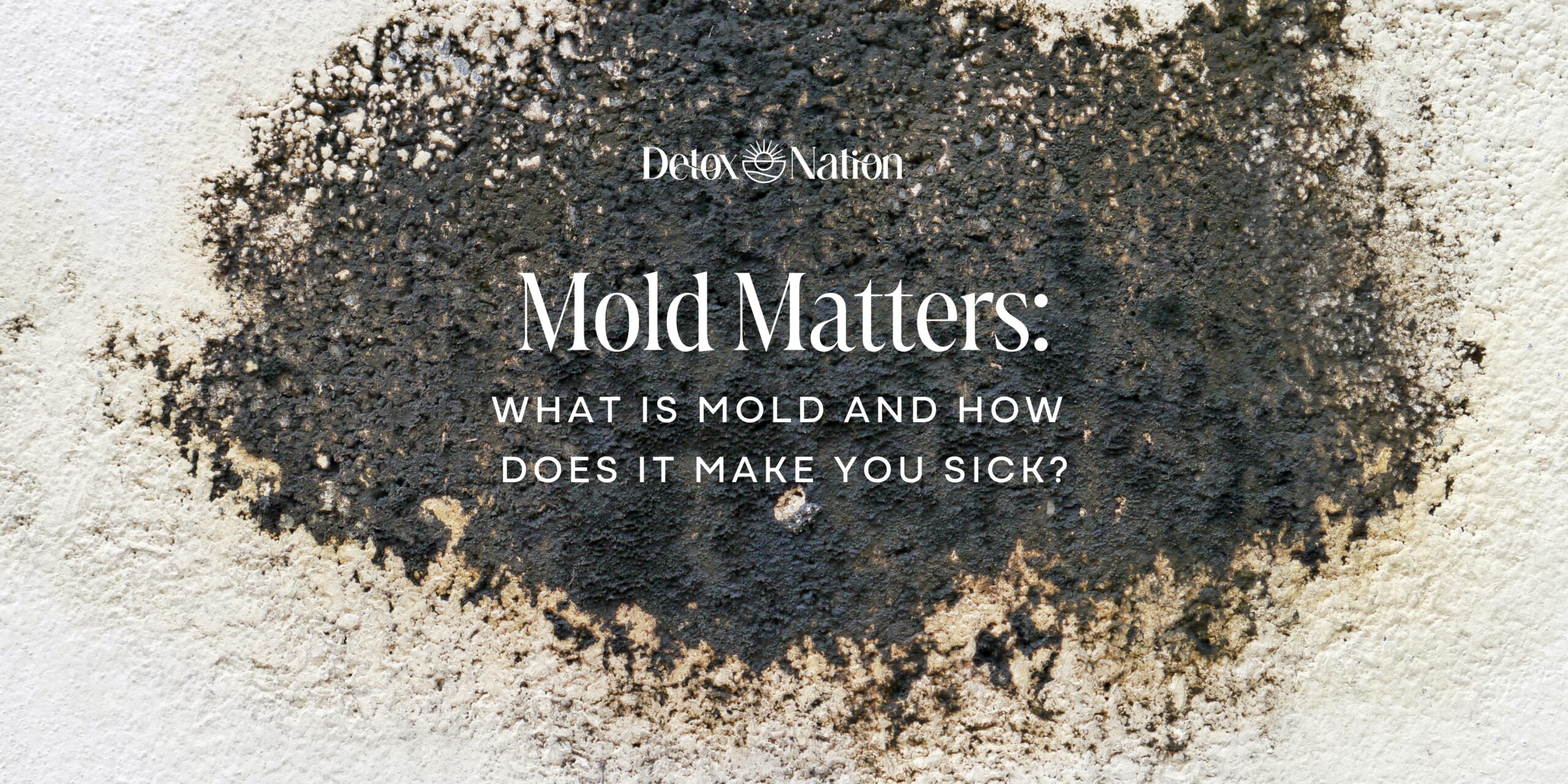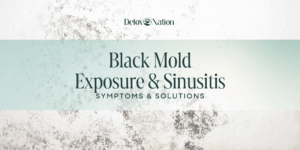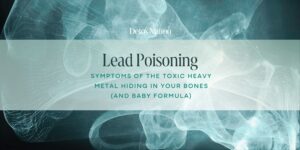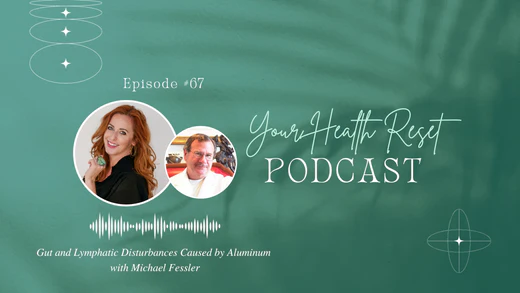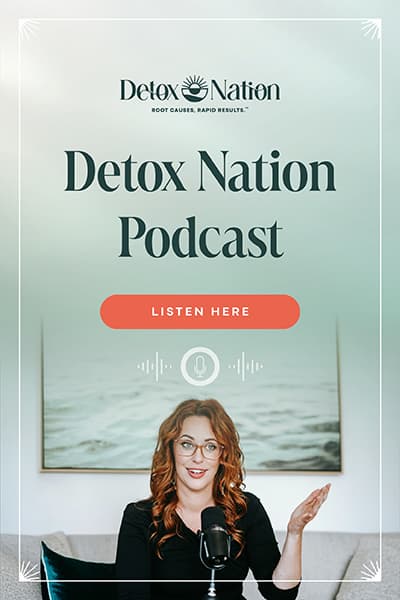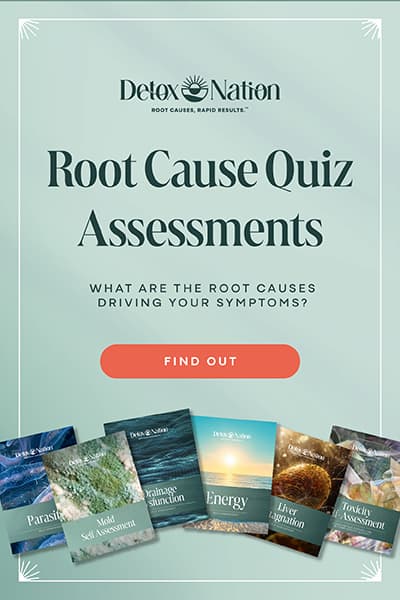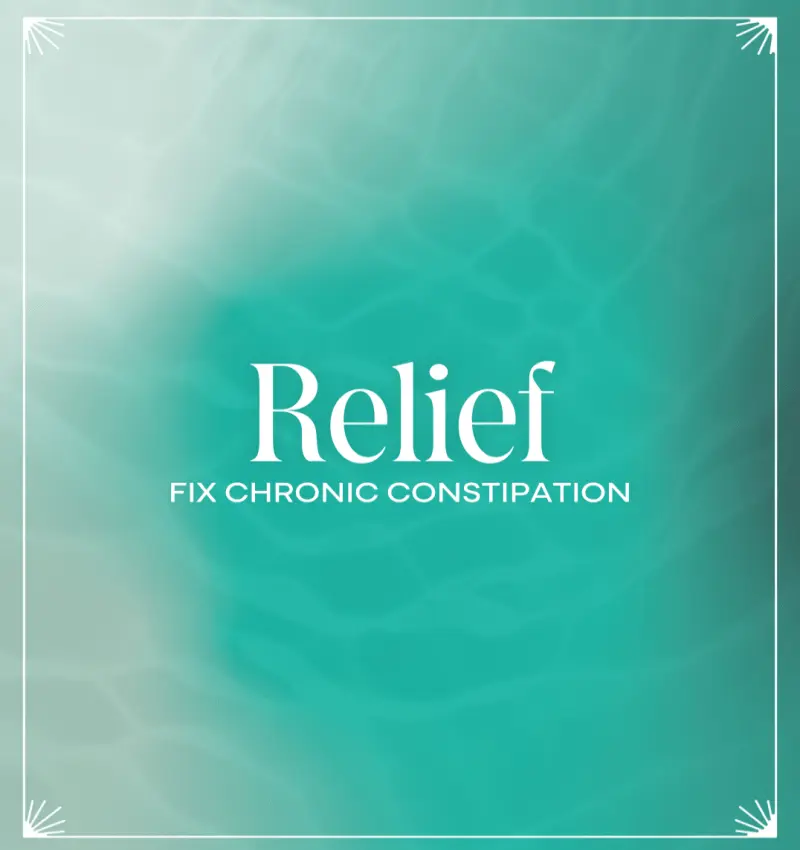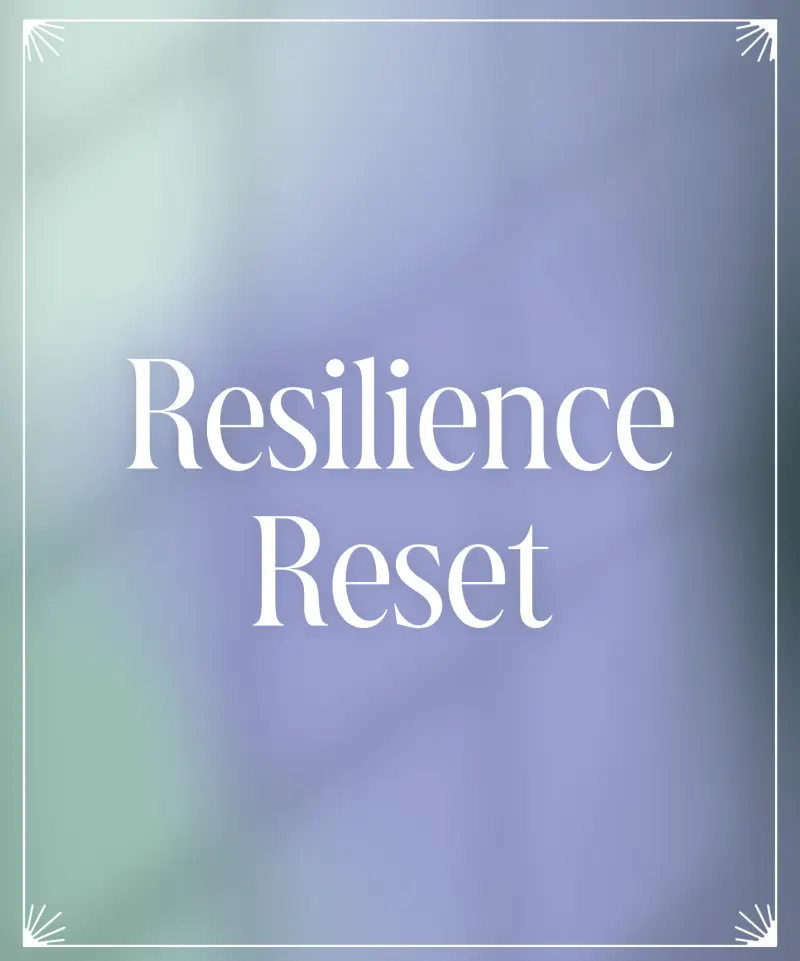Mold exposure and toxicity is becoming epidemic in our country, often going misdiagnosed for years, and initiating a devastating cascade of health issues.
I know from personal experience.
My heart felt like it was going to explode out of my chest. I went to the ER, and they thought I was having a heart attack.
I wasn’t.
I paid out of pocket for a gazillion tests, but they were all negative. The doctors and specialists discharged me home with no answers. I was terrified it would happen again.
After many years of chronic symptoms and toxicity, Michael and I figured it out on our own and healed ourselves. (Read the whole story here.)
It was the cumulative impact of all the mold exposures I’d have over the years living in the Pacific Northwest. (This was never even suggested as a possibility by any of the specialists I saw.)
Mold is more than just an unsightly blemish on your walls or food—it’s a living organism with the potential to cause serious health issues.
Whether it’s the musty odor in your basement or the fuzzy growth on forgotten food, mold is everywhere, thriving in damp and warm environments. (Our exposures to mold are cumulative.
Understanding some basics is crucial for maintaining a safe environment and your health. In this article, we explore some different types of mold, how you’re exposed, and the various strategies they use that make you sick.
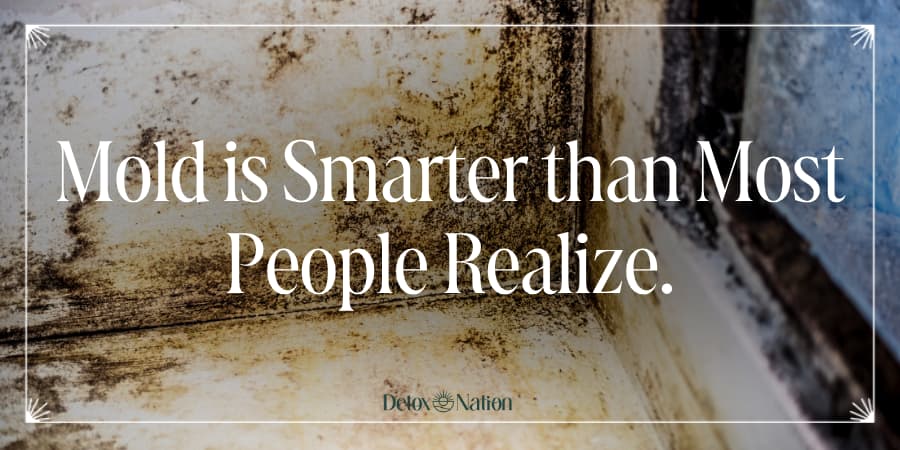
Key Takeaways
- Mold is a living organism that can cause serious health issues.
- Exposures to mold are cumulative.
- You can heal from mold toxicity.
- There are different types of molds, and they use common strategies that make you sick.
Understanding Mold and Types of Molds
Mold can appear in many forms, each with unique traits and effects. Inside homes, certain types of mold are common and can impact your health.
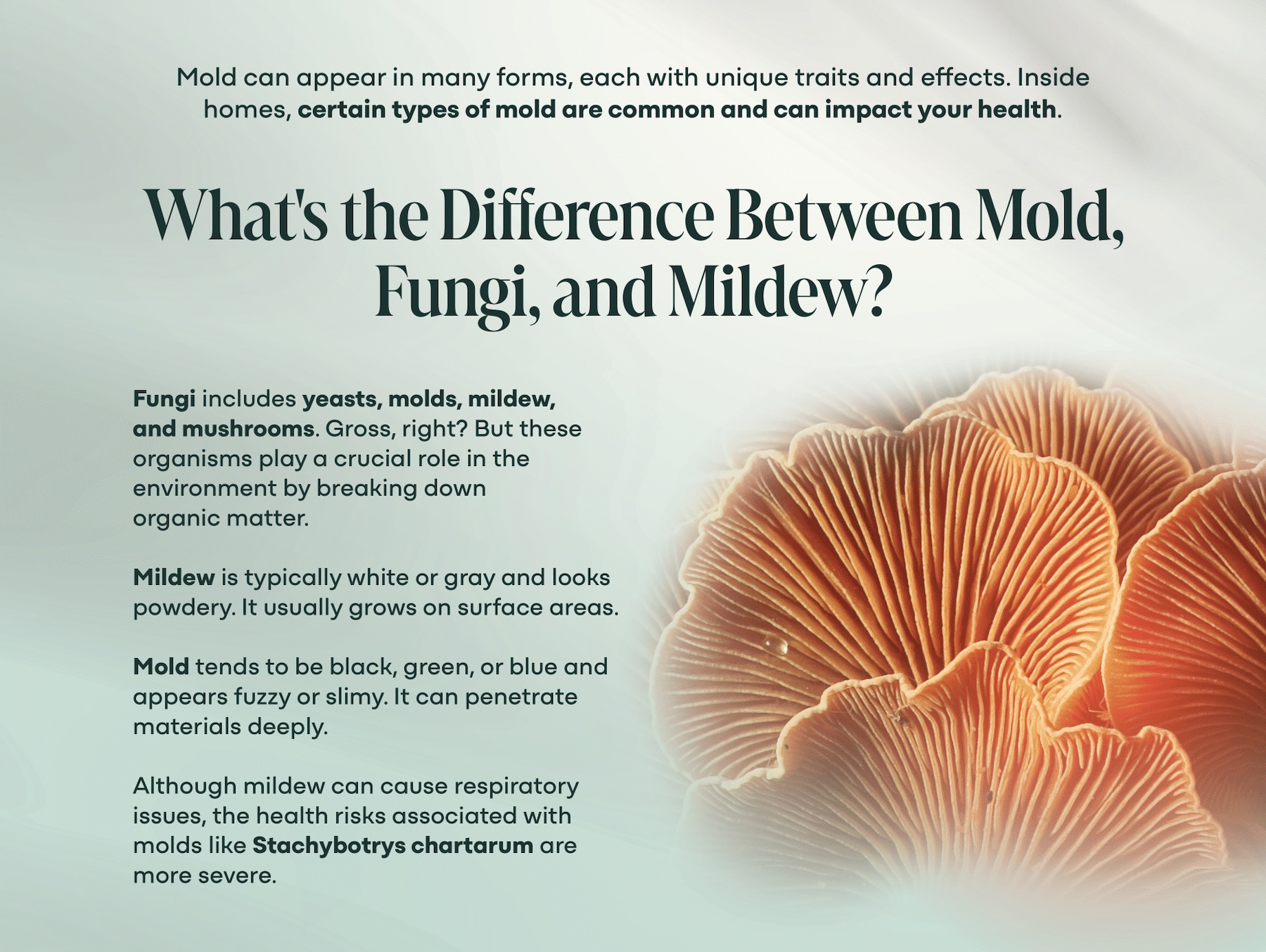
What’s the Difference Between Mold, Fungi, and Mildew?
Fungi includes yeasts, molds, mildew, and mushrooms. Gross, right? But these organisms play a crucial role in the environment by breaking down organic matter.
Mildew is typically white or gray and looks powdery. It usually grows on surface areas.
Mold tends to be black, green, or blue and appears fuzzy or slimy. It can penetrate materials deeply.
Although mildew can cause respiratory issues, the health risks associated with molds like Stachybotrys chartarum are more severe.

Mold Growth and Reproduction
Mold thrives in damp, warm environments.
Moisture is essential for mold growth, making basements, bathrooms, and kitchens prime areas. You can often see or smell mold in your house.
Water damage from leaks or flooding can create perfect conditions for molds like Stachybotrys chartarum (better known as black mold) to develop.
Poor ventilation and high humidity also contribute to mold growth indoors.
Mold reproduces through spores, which float in the air and settle on surfaces. When these spores find a damp spot with organic material, they grow and spread.
Mold can grow on various foods, leading to spoilage. High-moisture foods like fruits, vegetables, and bread are particularly prone to mold.
Start by taking action – even small steps can make a huge impact when done consistently.
I invite you to take this simple mold quiz to see if your symptoms indicate mold as a root cause to your health challenges. I’m here to support you every step of the way!
Take The Mold Quiz Now!Common Types of Indoor Mold
There are hundreds of molds that are found in homes. A handful of the more common molds are:
- Aspergillus is a more widespread indoor mold, often found on foods (such as peanuts, grains, and fruits) and in damp places like walls. It produces aflatoxins, which can be harmful.
- Penicillium is another common indoor mold, known for its blue or green color and fuzzy texture. It’s often found on water-damaged materials and can cause allergies and asthma. Penicillium is used in food production, like in blue cheese, but not all types are safe to consume.
- Fusarium grows on fabrics and carpets, especially in humid conditions. It’s known for its potential to cause infections, especially in people with a weakened immune system.
- Black mold or Stachybotrys chartarum is infamous for its toxicity and thrives in areas with high moisture and water damage. It often appears as black or dark green patches.
How Am I Exposed to Mold?
A common place of exposure to mold is in your home, but don’t forget about your office, your car, or even the retail shops and restaurants you frequent.
Inhalation
Perhaps the most common way you’re exposed to mold is through inhalation. Mold spores can float in the air, especially in damp or water-damaged areas. (Remember that leaky roof or pipe – or in my case, the car with the leaky seal?)
Breathing in these spores can lead to respiratory problems like nasal congestion, wheezing, and coughing, or worse.
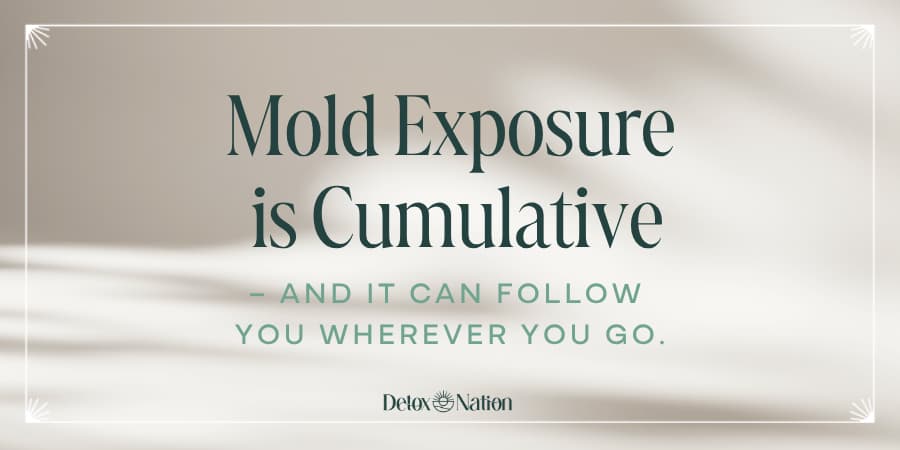
Ingestion
Ingesting mold happens when you eat contaminated food.
Don’t just remove the moldy part and keep going!
Mold can grow on various food items like bread, cheese, berries, apples, tomatoes, grapes, and more, producing toxins that can upset your digestive system.
Even small amounts of mold can cause symptoms like nausea, vomiting, and diarrhea.
Contact
Skin contact with mold can also cause health issues. Touching moldy surfaces or materials can lead to skin rashes, itching, and irritation.

How Does Mold Exposure Make Me Sick?
Mold exposure can seriously affect your health, especially through the actions of colonization, immune system interference, mycotoxins and biofilms.
Colonization
When you inhale, eat, or touch mold, it enters your system and sets up shop.
Your respiratory and digestive tracts are warm and moist – exactly the kind of environment mold loves.
When mold spores embed, this is called colonization, and it can happen in 24 hours.
The chances of colonization dramatically increase in the presence of bacteria, like the kinds found in your sinuses, respiratory tract, and digestive system.
Now mold will go with you wherever you go.
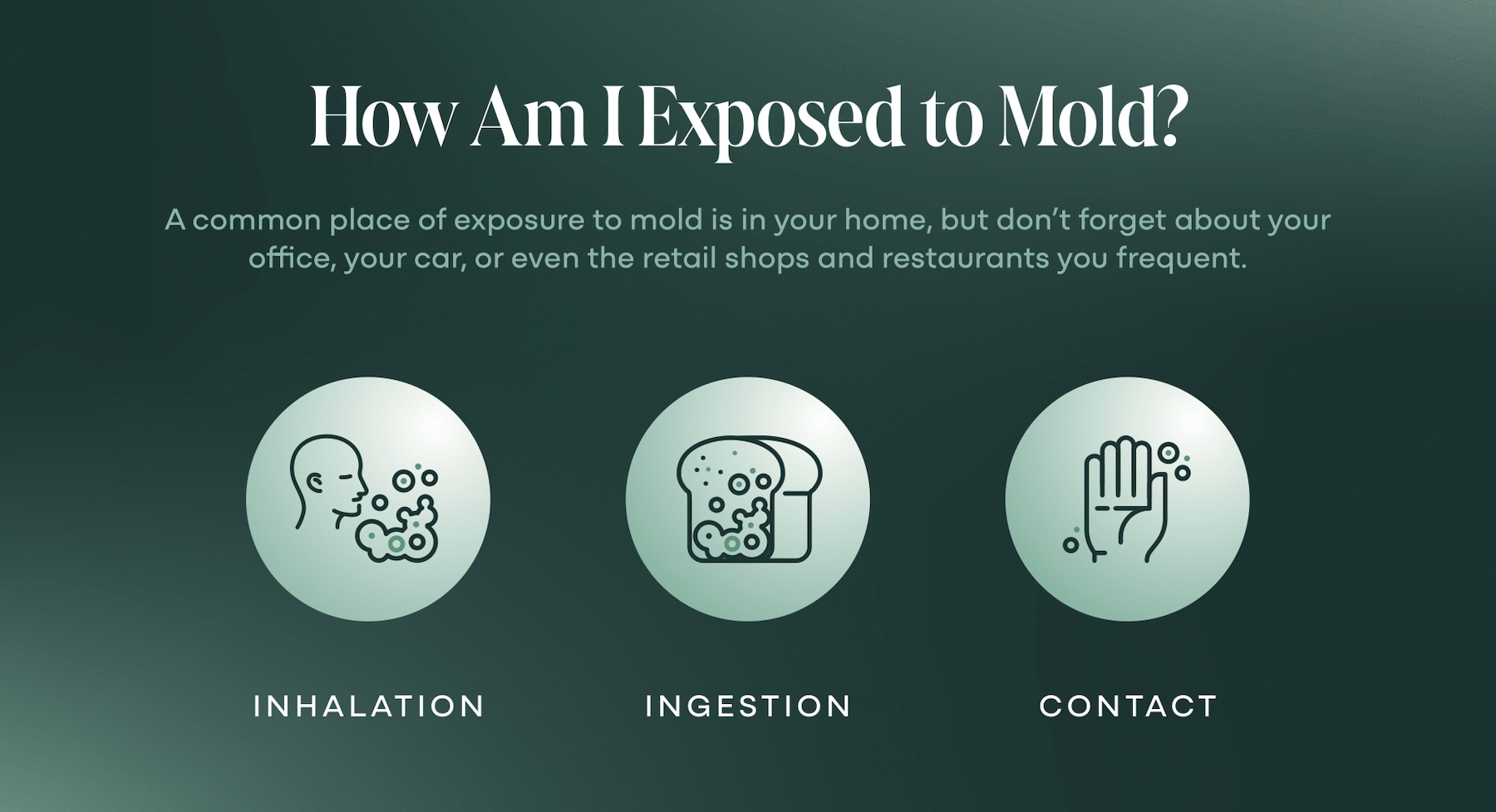
Immune System Interference
Mold is a living organism that strives for survival.
One of the first things mold does when it enters your body is to disrupt your immune system.
It compromises the very system responsible for protecting you so it can make a home inside your body.
Mold promotes the release of cytokines and interleukins (inflammatory agents) and other substances that weaken your body’s defenses.
Mycotoxins
Mycotoxins are toxic compounds produced by mold.
When you breathe in mold spores or come into contact with them, these toxins can enter your body.
Mycotoxins are tiny and freely pass in and out of cells.
They aren’t easily detectable in the blood (so a blood test won’t identify them).
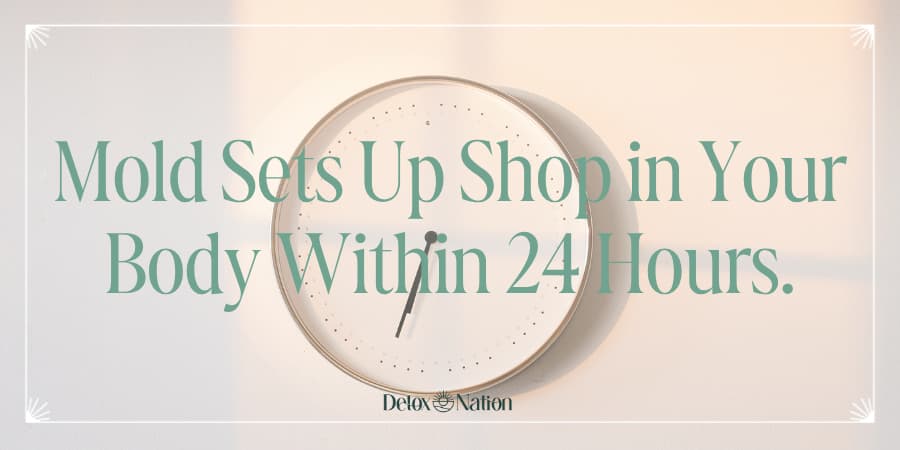
Mycotoxins attack your cells and can cause various symptoms, such as headaches, fatigue, and digestive issues.
People with certain genetic markers, like HLA-DR, may be more sensitive to these toxins. This variant is found in about 25% of people and makes it harder for them to detoxify and eliminate mycotoxins.
This is one of the reasons why different people living in the same environment don’t react the same way to mold.
While your brain fog may be so bad it scares you, your significant other may not have any response.
A few “fun” facts about mycotoxins:
- Mycotoxins are the most frequently occurring natural food contaminant.
- Mycotoxins can be more toxic than pesticides.
- The effects of mycotoxins and mold toxicity can be acute, cumulative, and chronic.
- One mold can produce multiple types of mycotoxins.
- One mycotoxin can be produced by different molds.
- Mycotoxins have been found in meat alternatives. People tend to choose these foods to “be healthier,” not knowing they’re inadvertently exposing themselves to mold.
- Mycotoxins are systemically bioavailable no matter the route of exposure.
- Modified mycotoxins (metabolites of a parent mycotoxin) may be more bioavailable than the parent mycotoxin.
- They inhibit protein synthesis.
- Mycotoxins cause leaky gut and leaky brain.
- Renowned mold and Lyme expert Dr. Dietrich Klinghardt references European studies which found mold produces 600 times more mycotoxins in the presence of EMFs! (This has serious implications for global health.)
We say “mycotoxins masquerade” because their health effects mimic other conditions.
You think you have digestive conditions – but it’s really mold.
You think you have respiratory conditions – but it’s really mold.
You think you have joint and muscle issues – but it’s really mold.
You think you have hormone dysregulation – but it’s really mold.
You think you have depression or anxiety – but it’s really mold.
You think you have neurological or cognitive dysfunction – but it’s really mold.
You think you have skin conditions – but (you guessed it!) it’s really mold.
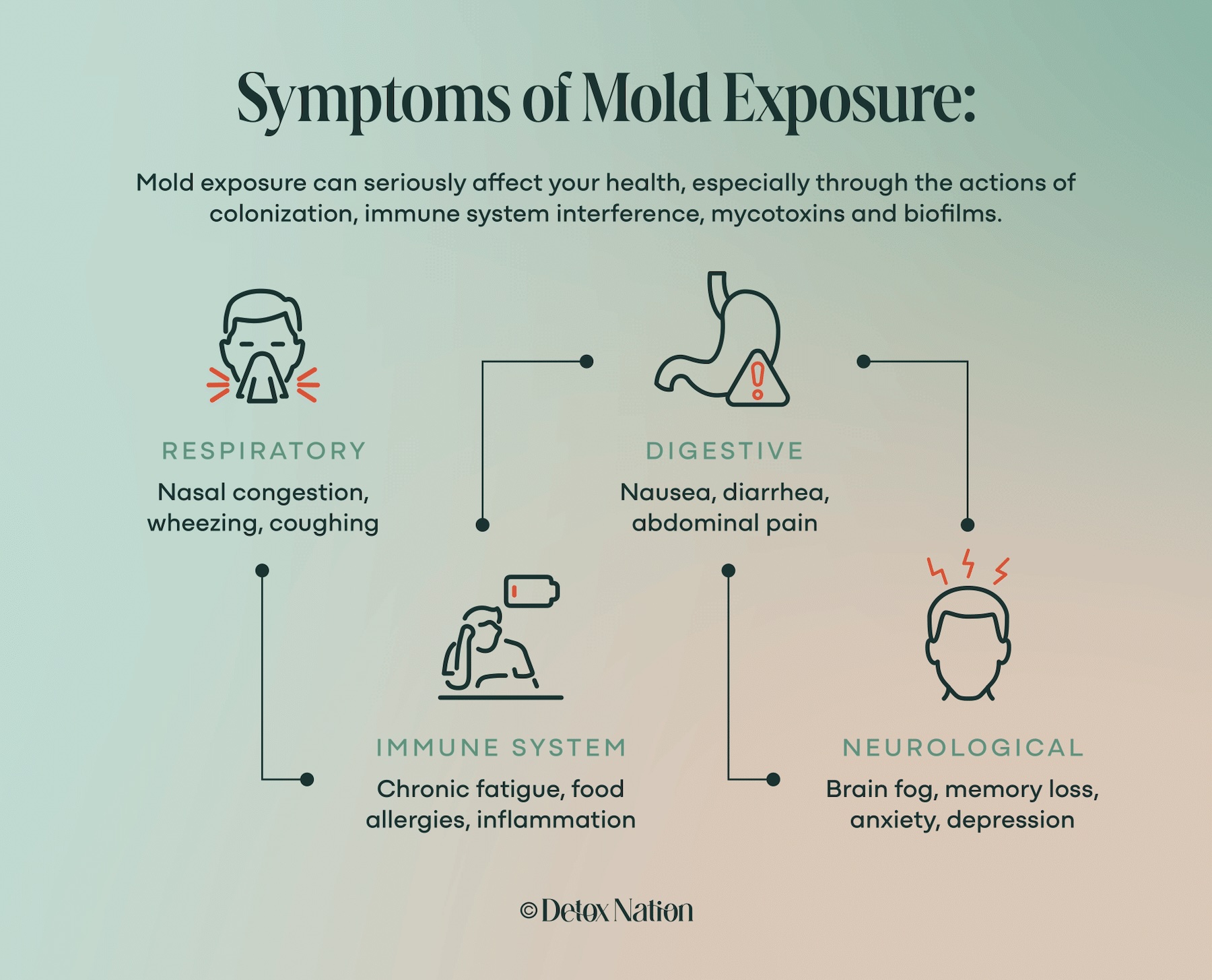
Biofilms
Biofilms are protective layers that mold creates to shield itself. Think of biofilm like a cozy blanket the mold snuggles under to hide from your immune system.
Or like the invisibility cloak in a popular book series about a young wizard.
These layers can form in your sinuses or digestive system and make it difficult for your body to fight off the mold. When biofilms are present, mold can colonize more easily, leading to long-term health problems.
This means that even if you leave the area with the mold infestation, you may carry the mold inside you. It can keep pumping out mycotoxins and making you sick.
You can continue to have symptoms for months or years after the exposure. It’s the “gift” that keeps on giving.
The presence of biofilms can also complicate treatments. Any treatment has a harder time reaching the mold colonies hidden within these protective barriers, making it less effective.
As your immune system suffers the effects of mold and mycotoxins, it makes you vulnerable to other bad actors – things like viruses, bacteria, and parasites (oh my!).
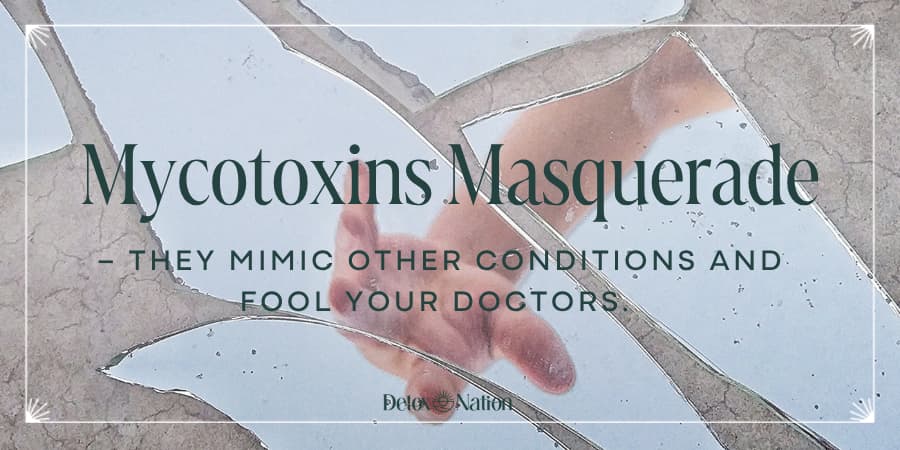
Action Steps to Manage Mold and Health
Now that you’re aware of mold and its strategies that can make you sick, it’s time to act!
- Be open to the idea that mold and mycotoxins may be at the root of your health issues.
- Investigate your home, office, car, and anywhere you spend time or experience an increase in symptoms for evidence of mold.
- Contact a mold remediation specialist if you find or suspect mold.
- Work with a mold-literate practitioner to avoid years of misdiagnosis!
- Never eat moldy soft fruits, vegetables, or breads as the mold can penetrate below the surface.
- Drink distilled water to avoid water as a source of exposure.
- Support your immune system and digestive system.
- Check back for additional articles and information!

Conclusion
Mold is smarter than most people realize. Driven by a biological imperative to survive and propagate, its brilliant strategies make you sick.
But your body is brilliant too. Mold toxicity is fixable.
No one can fix it for you.
Start by taking action – even small steps can make a huge impact when done consistently.
I invite you to take this simple mold quiz to see if your symptoms indicate mold as a root cause to your health challenges. I’m here to support you every step of the way!
Take The Mold Quiz Now!Frequently Asked Questions (FAQs)
What are some signs and symptoms of mold exposure?
The signs and symptoms of mold and mycotoxin exposure can range from simple things like headaches, congestion, runny nose, or burning eyes all the way to more serious problems like tachycardia, food allergies, mitochondrial dysfunction, chronic fatigue syndrome, leaky gut, multiple chemical sensitivities, nervous system dysregulation, brain fog, memory loss, depression, and more.
What strategies does mold use to survive and propagate?
Mold is sneaky! It uses strategies such as colonization, immune system interference, mycotoxins, and biofilms to live in your body. These strategies make you sick, but it is reversible!
No one else in my family is sick, so how can I have mold toxicity?
First, 25% of the population is genetically susceptible to mold. If you have the genetic variant and no one else in your house does, you’ll be impacted more by mold.
Next, remember that mold exposures are cumulative. Have you had more mold exposures than others in your household? (Think allll the way back to childhood!)
Also, if your liver, immune system, gut, etc. were already compromised by stress, heavy metals, or some other health condition, you’ll be more vulnerable.
Why do you say mold is a family-wide issue?
It can take years for a person to show severe symptoms of mold toxicity, depending on genetics, exposures, and other health conditions. Therefore, if one person in the household is sick, I recommend testing and treating all family members in the same environment. Why wait for the problem to become severe? If you’re sick, your significant other, children, and even pets are likely sick too!
How can I support my immune system and digestive system?
General immune support includes getting adequate restful sleep, ensuring proper nutrition with supplementation if needed, getting appropriate daily sun exposure, and managing your stress.
General digestive support includes eating nutritious food that doesn’t trigger your body, staying hydrated with distilled water, avoiding artificial sweeteners, dyes, toxins, and preservatives, and addressing leaky gut.
Since every person has unique biochemistry, the root causes of their health concerns (as well as the ways to address them) will be different.
How can I get rid of mold growth in my home?
If you have a visible mold problem and can see high levels of mold growing, I do not recommend you try to clean up the mold yourself. That can lead to additional health problems, especially if you’re allergic to mold or if there may be black mold exposure. I recommend you contact a professional mold remediation company to remove mold.
To prevent mold growth, make sure you don’t have a moisture problem. (Moisture and mold go hand-in-hand.) The key to preventing mold is to create an environment that is inhospitable to mold and mold spores that can cause health problems – one that is dry and has low humidity. Mold is everywhere, so it may not be possible to get rid of all mold. But you can keep mold levels down in different areas of your home by looking for signs of mold and acting quickly.

